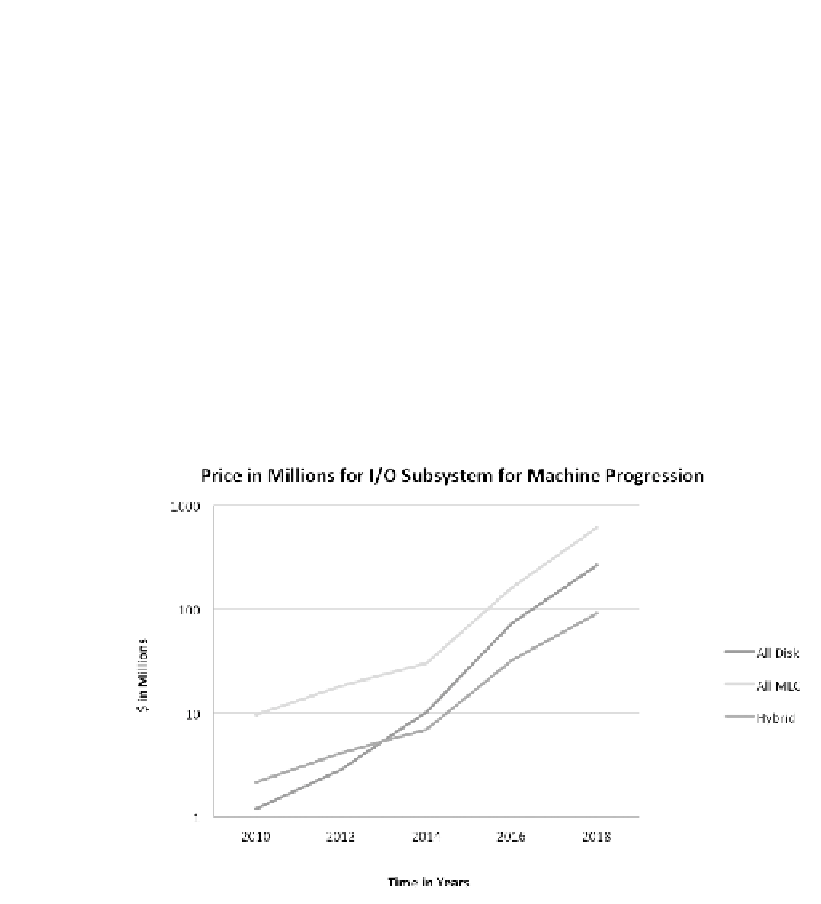Hardware Reference
In-Depth Information
disk drives required to keep up with JMTTI is non-linear as well. Furthermore,
this indicates that sites will be buying disks for bandwidth, not capacity, and
disks are not priced economically for bandwidth.
As seen in Figure 6.3, buying disks for bandwidth is very expensive as
is buying flash storage for capacity. A hybrid hierarchical approach is the
most affordable method for providing a way to deal with the horrible burst
of data associated with JMTTI and checkpoint time. The key to this strategy
is to place flash storage, or other storage, priced well for bandwidth near the
compute nodes. This approach minimizes the expense of moving the burst
of data quickly and then migrating some portion of the data residing in this
solid-state burst buffer. The genesis of this economic model came from work at
LANL, which was related to the Defense Advanced Research Projects Agency
(DARPA) Exascale Study [5] conducted in 2008.
A future concern for LANL is the need to deal with and differentiate be-
tween massive bursts of data from memory to file system vs. file system to
FIGURE 6.3: Purchasing economics for disk, Flash, and hybrid storage for
checkpoints, circa 2009. This analysis is based on two requirements: a 900
PB storage capacity and a bandwidth of 100 TB/s. Note that in 2010, when
purchasing disks for capacity, bandwidth was free. Purchasing Flash storage
for bandwidth requirements is always too expensive. By 2017, buying disks
to meet bandwidth capacities will be too expensive as well. However, looking
forward, a hybrid system is projected to be the most reasonable solution for
storage and network capacity requirements. [Image courtesy of Gary Grider
(LANL).]







